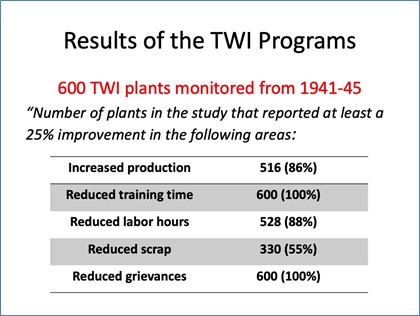Competency Testing in Recruiting: It’s Probably A LOT Easier Than You Think…
When we talk to companies about testing for competency during recruiting and selection, we often get pushback:
“That’s too complicated!”
“That’s too expensive!”
“That takes too much time!”
But does it really?
We maintain that the biggest reason that companies don’t do really engage in competency testing is that they really don’t have a proper understanding of what competent performance looks like for a given role – and HR people are given vague (and unreliable) proxies for skill that they need to use in recruiting (get me someone with a Master’s degree in biology!”).
Here’s the thing… for a line manager, it really isn’t that hard to come up with some simple competency tests that you can quickly use to determine if someone has what it takes to do the job. In fact, these sorts of tests have existed for as long as there’s been work, and employers.
- A chef will ask someone looking for a job as a cook to “make me an omelette”, or slice up some onions… and will immediately know if the person knows what they’re doing
- My father, when he was a foreman in a steel fabrication shop, would hand a prospective fitter a set of prints and ask some simple questions like “what would you make this doo-hickey from?” (tells him if he can read a plan and a bill of materials), or hand him a piece of unmarked steel and ask “is this what you’d use to make that?” (competent fitter will go to a grinder and do a spark test to figure out what grade of steel it is), etc.
By thinking about what you need, and what appropriate evidence of that skill is, you can design some pretty simple tests that raise the odds of a successful hire.
Sure, you say, that’s fine for practical stuff… but I want to hire “knowledge workers”
Again, it isn’t as hard as you think. If you think.
We wanted to hire some people to do some research work on one of our projects. We identified some critical key competencies associated with the work, including being able to follow directions, work autonomously, having some pretty basic computer and internet skills, and being able to write reasonably well in English.
The first test was simple: our job posting included some specific directions on how to apply for the role. We had 56 people apply… 6 of them followed the directions in the job posting. And then that eliminated 50 people who couldn’t be bothered to read and follow some simple directions.
The next test directed the folks who passed the first test to a website to take a free typing accuracy test, and then send me the result. The catch: there was no direct way to send the results from the site. Some people sent an email to complain that there was no way to send it; some sent me their claimed results (“I typed 62 words per minute with no mistakes”) in the body of the email, and a few did a simple screen capture of the test result, which they then either embedded it in, or attached it to, an email back to me. These folks got top marks for a) doing what they were told, b) showing some initiative, and c) having enough basic computer smarts to do a screen capture etc.
The third test was sent to the folks that scored well on Test #2: I sent them to a couple of online articles, asked them to read them and summarize the key information in a single-page Word document, with specific font, margins, text size, line spacing, etc.
And the 3 that passed these tests got hired – and did really well in the roles that we hired them for.
Here’s the thing – these weren’t difficult tests, and they didn’t involve doing the specific work we needed them to do (developing essential skills profiles based on detailed role descriptions for jobs of various technical complexity). We knew that we’d have to train them in that process anyway – we have a specific technique for doing this – but it was those foundational competencies that I needed to verify. That’s the evidence that the tests provided.
A few years back, a social agency in Arizona conducted a “no resume hiring fair” for at risk youth. These were kids who were unlikely to graduate from high school, let alone go to college. They were at risk of being pulled into gangs, or worse, with all of the inherent consequences.
The companies involved were involved in the supply chain/logistics, advanced manufacturing, etc. The tests? They put kids on a basketball court and tossed them a ball.
It was quickly apparent who the leaders were. Who the team players were. How well people communicated and cooperated. Who sat back and let others carry the load. And the companies hired 350 at risk youth through this program, and put them into company-funded technical apprenticeships that led to well-paying, secure jobs.
The cost? A few hours of people’s time to scout the kids on the basketball court.
Be creative in designing pre-employment tests to uncover the critical competencies that you need, and that aren’t captured in typical academic proxies. It’s worth it!







